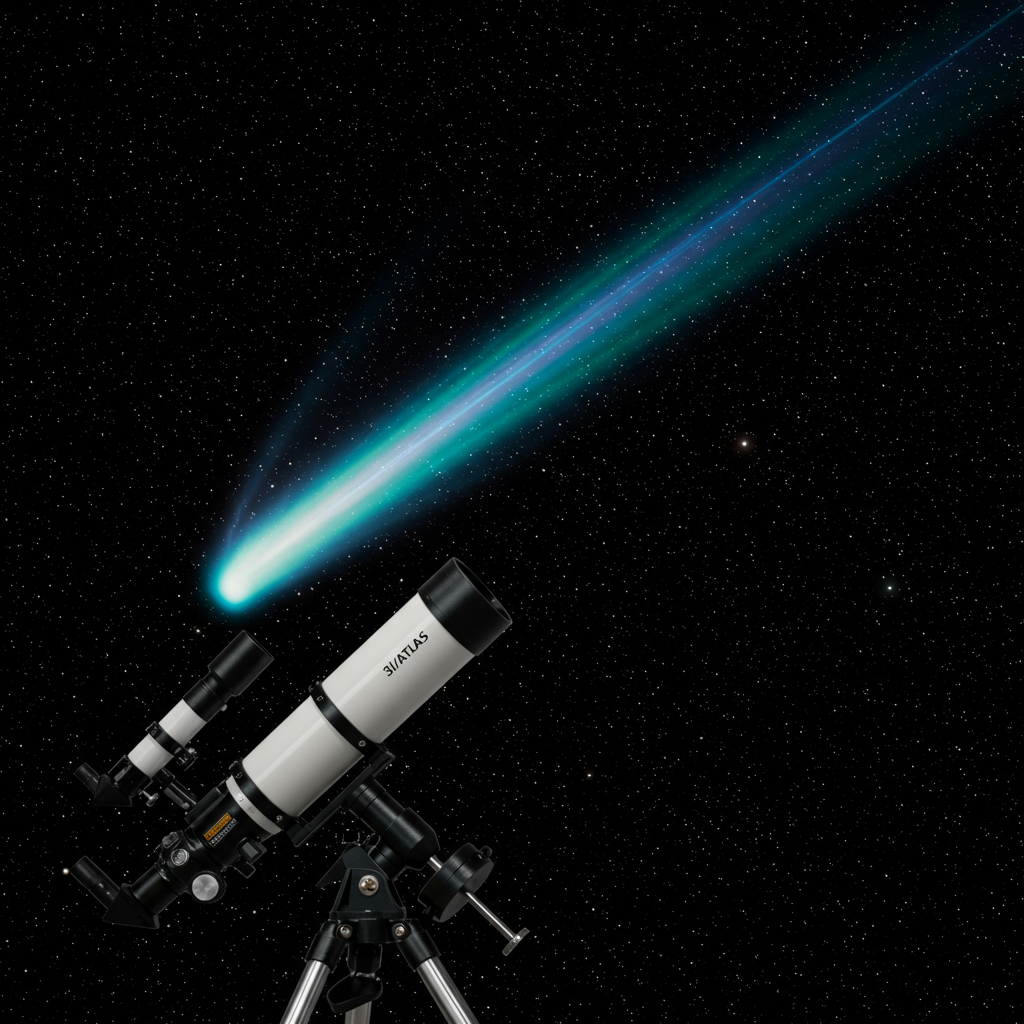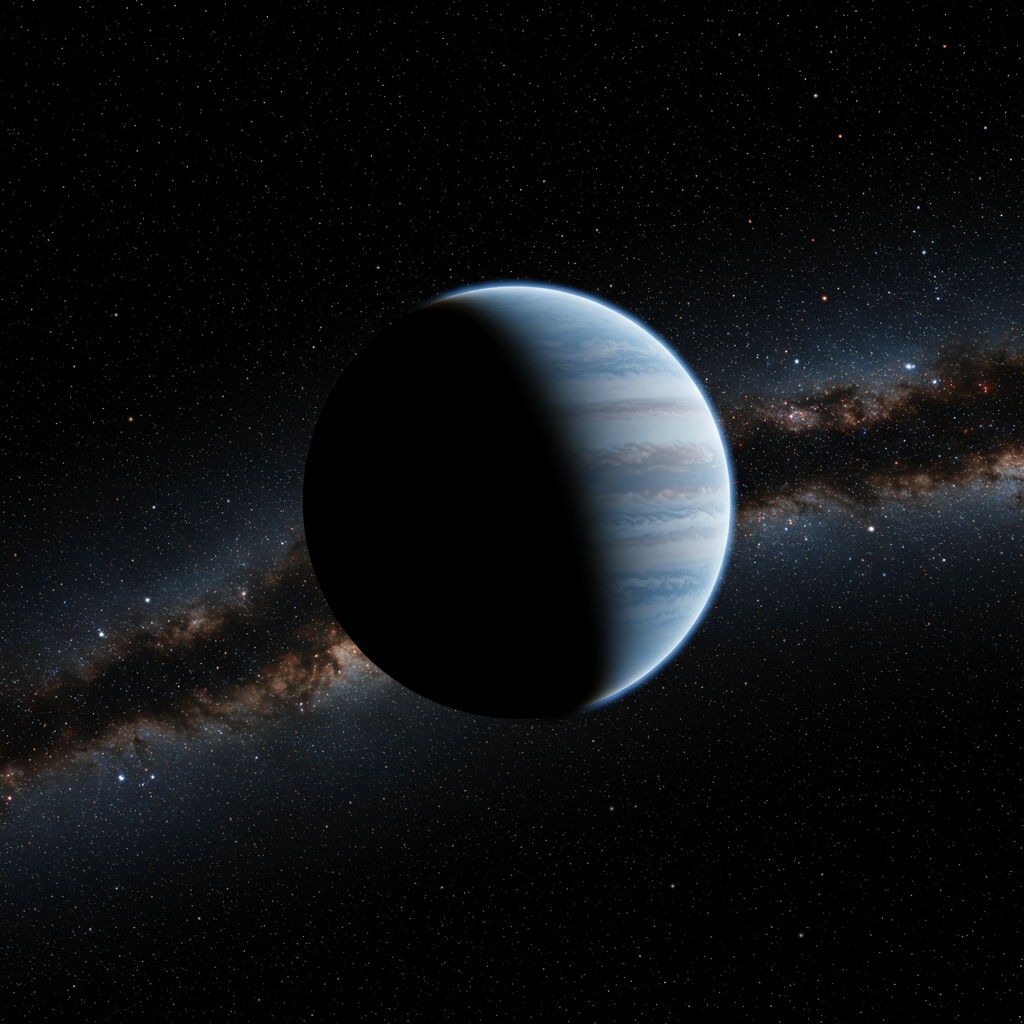A rare celestial guest has entered our solar system, traveling at incredible speed. This newly discovered object, officially named 3I/atlas, is an interstellar visitor. Its journey began far beyond the sun’s reach. Astronomers are racing to study this third-ever confirmed interstellar object. It offers a unique chance to examine material from another star system right in our cosmic backyard.
A Mysterious Arrival from Deep Space
This cosmic newcomer was first revealed on July 1. Researchers spotted it in data from the Asteroid Terrestrial-impact Last Alert System (ATLAS). ATLAS uses telescopes in Hawaii, Chile, and South Africa. These telescopes constantly scan the night sky for moving objects. Subsequent observations provided data stretching back to June 14. The object was initially designated A11pl3Z. Its unusual speed and trajectory quickly hinted at its extraterrestrial origin.
Why is 3I/ATLAS Interstellar?
Objects bound to our sun follow curved paths. They are captured by the sun’s gravity. 3I/ATLAS behaves differently. It’s shooting through the solar system at about 152,000 mph (245,000 km/h). Its path is remarkably straight and flat. This high speed and distinct trajectory suggest it has enough momentum to escape the sun’s gravity. It won’t be captured into an orbit. Instead, it’s just passing through. This confirms its journey began outside our solar system.
On July 2, NASA officially confirmed its interstellar nature. This makes 3I/ATLAS only the third such visitor ever identified. This is a significant event for astronomers.
Comet or Asteroid? The Classification of 3I/ATLAS
When first discovered, astronomers weren’t sure if 3I/ATLAS was an asteroid or a comet. The first confirmed interstellar visitor, ‘Oumuamua (seen in 2017), was asteroid-like. The second, 2I/Borisov (seen in 2019), was clearly a comet.
New observations of 3I/ATLAS show tentative signs of cometary activity. Scientists have detected a bright cloud of gas and ice. This cloud, called a coma, is typical of comets. There’s also evidence of a potential tail forming. Based on this, NASA now classifies 3I/ATLAS as most likely a comet. It has also been given the formal comet designation C/2025 N1 (ATLAS).
Estimates suggest 3I/ATLAS could be quite large. It might measure up to 12 miles (20 kilometers) across. More observations are needed to refine its exact size, shape, and composition. Studying its coma and tail can reveal clues about the conditions in its distant home star system.
Tracking the Path of an Interstellar Guest
Astronomers are now closely tracking 3I/ATLAS. It’s currently about 4.5 times the Earth-sun distance from the sun. This distance is measured in astronomical units (AU). 1 AU is the average distance between Earth and the sun.
3I/ATLAS is heading toward the inner solar system. It will reach its closest point to the sun, known as perihelion, on October 30. At perihelion, it will be just 1.4 AU from the sun. Shortly before that, it will make a relatively close approach to Mars. It will pass within 0.4 AU of the Red Planet. This Mars flyby happens around October 3.
Earth will be on the opposite side of the sun when 3I/ATLAS is at perihelion. This positioning is important. NASA officials have confirmed that the comet poses absolutely no threat to Earth. Its closest approach to our planet is expected in December. This will occur as it is exiting the solar system. At its nearest point to Earth, it will still be at least 1.6 AU away. That’s well over 100 million miles.
Watching 3I/ATLAS: Past and Future Opportunities
Currently, 3I/ATLAS is too faint for typical amateur telescopes or the naked eye. However, there’s hope it might brighten significantly. This could make it visible to backyard astronomers in the coming weeks and months.
For a closer look at the time of the initial reports, the Virtual Telescope Project (VTP) provided a public opportunity. They hosted a free livestream event on July 3. This broadcast shared views from VTP’s powerful telescope in Italy. VTP had already captured striking images of the comet before the livestream.
The window for observing 3I/ATLAS is limited. Astronomers can study it until late September. After that, it will become too close to the sun to be seen. It will re-emerge from behind the sun and become observable again starting in December. Scientists are racing against time to gather as much data as possible.
Powerful instruments may join the observation effort. Researchers hope to image 3I/ATLAS using the Vera C. Rubin Observatory. This facility is the world’s most powerful optical telescope. Its wide field of view is ideal for tracking moving objects like comets. Some proposals also suggest using the James Webb Space Telescope for detailed composition analysis. There’s even a possibility of using NASA’s Mars rovers to photograph the comet during its close pass by Mars.
The study of objects like 3I/ATLAS is crucial. They provide direct samples from other planetary systems. Analyzing their composition can reveal details about the conditions and materials present during the formation of planets around other stars. Each new interstellar visitor offers a unique perspective on galactic chemistry.
Frequently Asked Questions
What exactly is 3I/ATLAS and why is it special?
3I/ATLAS is a newly discovered space object that has been confirmed as an interstellar visitor. This means it originated from a star system other than our own. It is traveling through our solar system but will not remain captured by the sun’s gravity. It’s special because it’s only the third such object ever confirmed. Its high speed (152,000 mph) and straight trajectory are key indicators of its origin outside our solar system. NASA currently classifies it as most likely a comet, showing signs of a gas and ice cloud (coma).
How can I see or learn more about this interstellar visitor?
Seeing 3I/ATLAS requires powerful telescopes right now, as it’s too faint for the naked eye or amateur equipment. The Virtual Telescope Project hosted a livestream of the object on July 3 using their professional telescope. While that live event has passed, you can check their website or YouTube channel for recordings or future observation plans. Scientists hope the comet may brighten enough for backyard telescopes in the coming months. Follow updates from NASA and astronomical organizations for the latest visibility information and research findings.
Does the interstellar comet 3I/ATLAS pose a threat to Earth?
No, the interstellar comet 3I/ATLAS poses no threat to Earth. Its trajectory through the solar system keeps it at a safe distance from our planet. During its closest approach to the sun in October, Earth will be on the opposite side of the sun. Its closest approach to Earth is expected in December as it leaves the solar system. At its nearest, NASA states it will remain at a minimum distance of at least 1.6 astronomical units (AU), which is over 100 million miles away.
The Continuing Saga of 3I/ATLAS
The arrival of 3I/ATLAS is a thrilling moment for astronomy. It underscores the dynamic nature of our galactic neighborhood. While its brief visit limits observation time, the insights gained will be invaluable. Scientists will use powerful telescopes here on Earth and potentially in space to unlock its secrets. This rare interstellar comet provides a tangible link to distant star systems. Its study will deepen our understanding of how planetary systems form and evolve across the cosmos. The race is on to learn all we can before this extraordinary guest continues its journey back into interstellar space.
Word Count Check: 900 words




